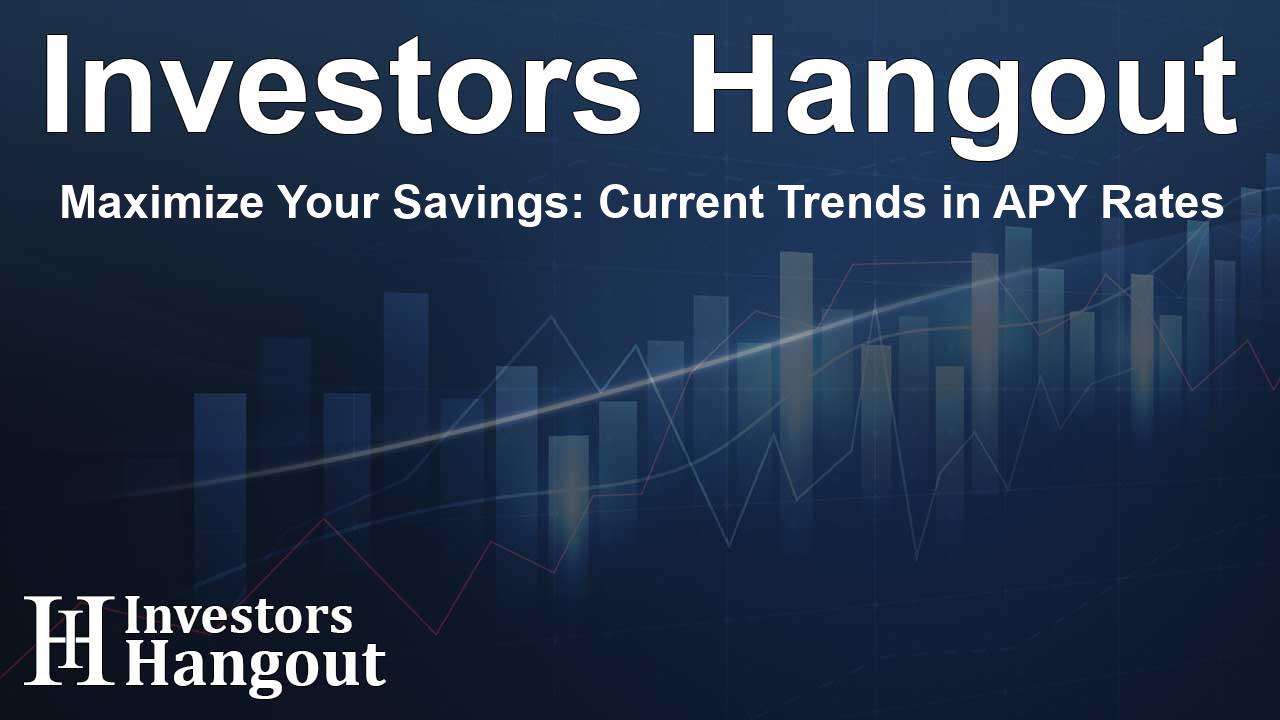Understanding Current Savings Account Interest Rates
Recent hikes in savings account interest rates have surpassed expectations, reaching their highest levels in over a decade. Thanks to the Federal Reserve's rate increases, consumers now have a rare chance to earn more on their savings. However, rates can vary significantly between financial institutions, making it essential to compare offers to find the best deals available.
Overview of Today's Savings Interest Rates
The current national average savings account rate stands at 0.46%, according to various financial surveys. While this may seem low, it's worth noting that it has risen sharply from just 0.07% a couple of years ago. This impressive growth is largely due to the Federal Reserve's monetary policy aimed at controlling inflation.
Since the Fed began raising interest rates in March 2022, there have been 11 increases. Following these adjustments, one expert has indicated that we might see a downward trend in rates starting as early as September, suggesting a shift in savings interest rates across the board.
Although the national average may not be as competitive as other savings options like CDs or various investments, many banks are currently attracting customers with savings rates that significantly exceed this average. Some institutions are even offering rates of over 5% APY, which is quite impressive.
Top Offers in the Market
Poppy Bank currently leads the market with an outstanding 5.50% APY on its Premier Online Savings Account, which requires a minimum opening deposit of $1,000. This exceptional rate is guaranteed for the first three months of the account.
In addition, Betterment offers a cash management account with the same 5.50% APY. Notably, this product does not require any minimum initial deposit, making it accessible to a wider audience.
Potential Earnings from Savings Accounts
The interest earned on a savings account can vary greatly, primarily depending on the annual percentage rate (APY). This figure represents your total earnings over a year, taking into account the base interest rate and the frequency of compounding, which is typically daily.
For example, if you invest $1,000 at the average interest rate of 0.46% with daily compounding, you would have approximately $1,004.51 at the end of the year—resulting in a modest $4.51 in interest.
On the other hand, if you placed that same amount in a high-yield savings account with a 5% APY, your total would grow to around $1,051.27 after a year, earning you $51.27 in interest. This difference underscores the importance of selecting the right savings account.
How Deposits Impact Returns
The amount you deposit plays a significant role in your earnings. If we revisit our earlier example and increase the deposit to $10,000 in a high-yield savings account with a 5% APY, your total balance would rise to $10,512.67 after a year, yielding a substantial $512.67 in interest.
Why You Should Open a High-Yield Savings Account
The changing landscape of savings rates suggests that these high-yield opportunities may not last forever. It is wise to explore the options available and consider opening a high-yield savings account to maximize your earnings during this critical financial period.
Frequently Asked Questions
What is a high-yield savings account?
A high-yield savings account typically offers a much higher interest rate compared to standard savings accounts, allowing your money to grow at a faster rate.
How do I find the best savings account rates?
To discover the best savings account rates, compare offers from various banks and credit unions online, paying close attention to APY and any associated fees.
Are savings accounts safe?
Yes, savings accounts at federally insured banks are generally considered safe, as your funds are insured by the FDIC up to the applicable limits.
How often do savings account interest rates change?
Interest rates on savings accounts can fluctuate frequently, often influenced by the Federal Reserve's decisions regarding benchmark rates.
Can I withdraw money from a savings account anytime?
While you can access your funds, many savings accounts impose limits on the number of withdrawals or transfers you can make each month to maintain your account's status.
About The Author
Contact Ryan Hughes privately here. Or send an email with ATTN: Ryan Hughes as the subject to contact@investorshangout.com.
About Investors Hangout
Investors Hangout is a leading online stock forum for financial discussion and learning, offering a wide range of free tools and resources. It draws in traders of all levels, who exchange market knowledge, investigate trading tactics, and keep an eye on industry developments in real time. Featuring financial articles, stock message boards, quotes, charts, company profiles, and live news updates. Through cooperative learning and a wealth of informational resources, it helps users from novices creating their first portfolios to experts honing their techniques. Join Investors Hangout today: https://investorshangout.com/
The content of this article is based on factual, publicly available information and does not represent legal, financial, or investment advice. Investors Hangout does not offer financial advice, and the author is not a licensed financial advisor. Consult a qualified advisor before making any financial or investment decisions based on this article. This article should not be considered advice to purchase, sell, or hold any securities or other investments. If any of the material provided here is inaccurate, please contact us for corrections.

